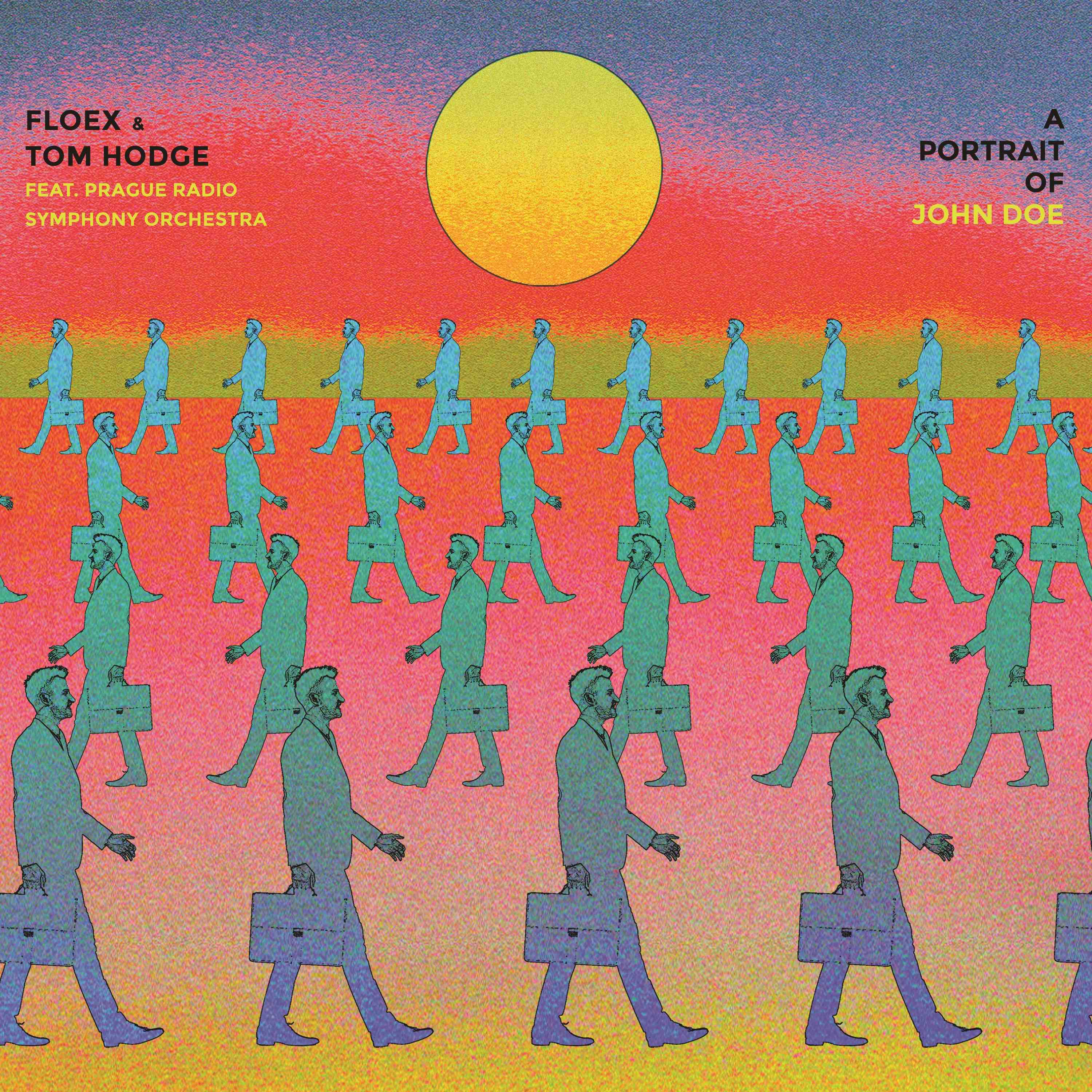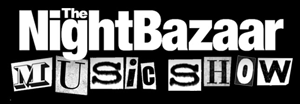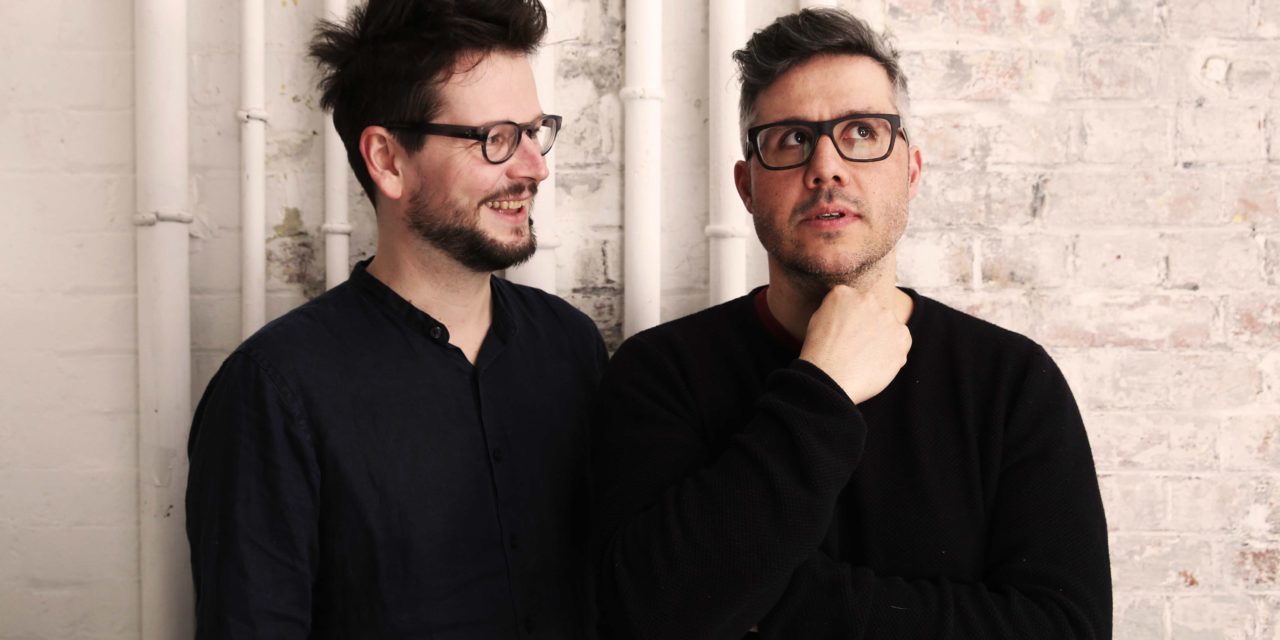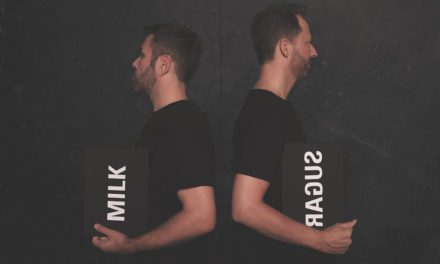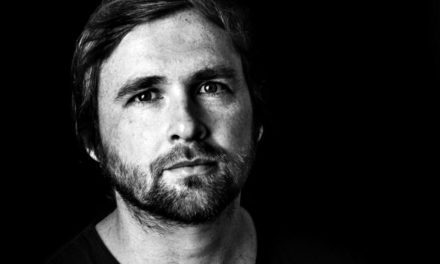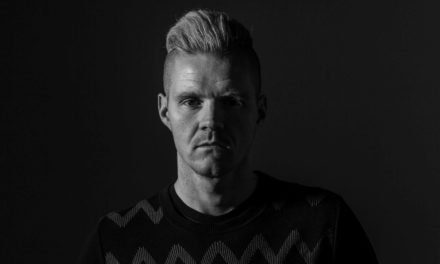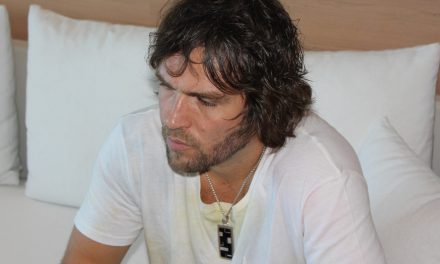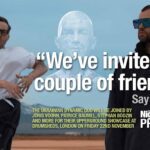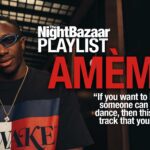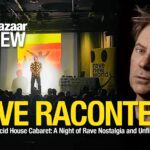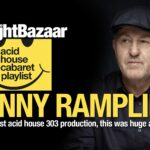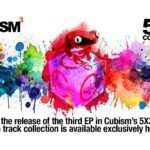MERCURY KX are releasing Floex & Tom Hodge’s collaborative album ‘A Portrait Of John Doe’.
Out now, the album sees Floex (aka Tomas Dvorak, the Czech clarinetist, composer, producer and multimedia artist from Prague), and London-based Hodge (the British composer, pianist, and clarinetist, who recently scored McMafia) bring together classical and radical “avant-garde” electronic music. The pair, who’ve previously worked with Max Cooper (Remnants), began work on the album after meeting at the Berlin festival in 2014, the project has taken three years to complete and saw the pair work together with the Prague Radio Symphonic Orchestra (PRSO) to bring the music and their arrangements to life.
We caught up with them to find out more.
Your new album is a musical collaboration. Was it a mutual collaboration as composers and producers or did you have separate input?
FX: Just to make it clear in the first place. We are not that typical dj, producer on one side and composer on the other duo. When we worked in the studio on the sketches of the songs, it was really mutual process. For example my main instrument is clarinet, but Tom plays the clarinet as well. That is great because in the studio we could create duets. Tom is really great pianist, so he was the man behind the keyboards and it often helped us record the ideas quickly. I am very bad with the piano but I could sometimes at least use it for explaining some ideas.
Having said that we have some tendencies, things we focus on in music more. And I think what’s great about it that we compete each other. It was really helpful thing during the process of making the album, because once we had these initial sketches finished we could share the roles. Tom has definitely more deeper knowledge of music and also experience with the orchestrations, so he was the main person during the preparations of the scores for the symphonic orchestra. For me it was the first time I have ever experienced something like that. On the other side I really like to play with the forms of the songs so I was able to help developing the song. Finally I am very much into production and all that sonic chemistry so the songs have been finished in my Prague studio.
Would this type of musical concept have been something you would have eventually tried solo and how different would the outcome have been?
TH: The concept is entirely borne out of our collaboration. When we first made some music together, banging on pots and playing bicycle spokes, actually we didn’t know each other very well at all either. (I essentially just turned up in Prague in between orchestra rehearsals for a ballet I was working on in east Germany) So discussions about everything philosophical and narrative to do with the album and indeed music in general have gone hand in hand with the actual making of the music. A Portrait of John Doe would not have appeared in any other way I don’t think.
The album is very evocative and has silent movie soundtrack qualities, can you visualise an emotional storyline or is it intended to be more eclectic than that?
FX: The funny thing about that is, during the process of making the album we realised that too. We realised that the first stories which appeared behind the tracks were our own stories. However later we found out that these stories are more universal and we created our character, John Doe.
TH: Making it vaguely into a day in the life of John Doe helped drive the narrative we needed to complete the album.
Please talk us through the album.
TH: Well it starts with the church bells you can hear from Tomas’ studio in Prague and then John Doe has a long and exciting day.
FX: Yes, there is opening track ‘Inauguration Of Nobody’ and also the last one ‘Requiem’ which help frame the album. However the tracks inside are different random stories we discovered when improvising and making the sketches of songs. The music was first, then it brought some idea for the story. For example the song ‘Machines Are Dancing’ started with robotic polyrhythmic sequence, it inspired us to make song about the mechanical process in factory. ‘Wednesday Is New Friday’ we imagined John Doe being bored at work and looking forward to the evening and how he can get wasted even on Wednesday..
TH: John Doe is definitely a dreamer and this led us to Ikaria and also somehow Prelude, as what he believes might be a prelude to bigger and better things.
Which is your favourite track and why?
TH: I have different favourites each day! But I am going to go for Requiem. I love the polyrhythmic synth line, the chaos and the contrast with the simple piano and strings. Many of these musical moments have vivid memories attached too- crowding round the synth with four hands playing and operating the LFOs, the huge low C resolve in the double basses at the string session, the quiet experiments and improvisations on Tomas’ piano. But ask me again tomorrow…
FX: For me it is also changing. I like Requiem because of the strange formal structure, as Tom has already mentioned. Two quite crazy almost brutal expositions and in the middle very lyrical part for strings and piano for me symbolises a transition to the outer world and back. I really like ‘I Dream Of Ikaria’ just because it is weird and I especially like the initial part of the song. The name has more meaning and connotations- it also refers to the Czechoslovak trippy sci-fi movie ‘Ikarie XB 1’ from 63. The soundtrack of this movie was kind of sound reference for us. On one hand we tried to make the sound of the album feel very vintage, on the other we tried to come up with cutting edge quality and sound design. These two polarities create kind of tension.
Would you be able to recreate the album live? Are there any plans to perform it?
FX: Yes, absolutely. We are preparing the live shows for the autumn period. Since this project is brand new, it will once again be a more organic and spontaneous process when it comes to live shows. In any case we have prepared two formats. One is big format with band, four percussionists and the symphony orchestra. We already had opportunity to perform two concerts in Prague with Prague Symphony Orchestra with this set up. During these concerts we recorded orchestra musicians on 35 Go Pros and created a concept of the virtual orchestra. This is the second format which is more flexible and for the clubs. It consists of small band and special virtual orchestra mapping projection.
Are there going to be further collaborative releases between yourselves?
TH: Will we say a tentative yes?! Apart from anything else, we really want to elongate the post-album process. We have this really exciting live project brewing but it will inevitably take a good while to filter into the system, and we also need time to speak to orchestras about programming John Doe into their concerts, so just from a practical point of view, a bit of new music will help keep things bubbling along. Of course, creatively this would also be no great hardship either!
The album is being released on CD, vinyl and digital formats on Mercury Records’ Mercury KX label. A go to label for modern composers. How did you become involved with the major label?
TH: The great major label experiment! I joined on the publishing side first because of my long-standing connection with Tash Baldwin. And then I began to speak to Decca people on the record side- I contributed some arrangements to cellist Sheku’s debut album and my soundtrack with Franz Kirmann to the recent BBC series, McMafia, was out on MKX too. Tomas and I began chatting to them and here we are!
But yes we are both indie at heart and even now, it does feel a little strange to be releasing this with a major. It’s a very different experience being a small cog in a giant machine.. I suppose we should say the machines are dancing!
How long have you been composing music?
TH: I started making music for commercials in 2000.
FX: Funny, I think I never asked Tom about it, but my first album was released in 2001. So about the same time.
What level is your clarinet playing?
TH: I was quite reasonable at school, but I don’t practice enough anymore! I suddenly took a notion to play concerts with it in Piano Interrupted a few years back but now I try to only play things that are slow, low and emotive! Well that, and weird noisy squeaking…
FX: For me it is the main instrument, I learned the instrument from 6, so I guess I am decent clarinet player. Nowadays it is unfortunately hard to find proper time for the instrument. Being in the studio means constantly spreading energy among many skills – instrument playing, composing, arranging, producing, engineering etc.
Do you play any other instruments?
TH: My principal instrument is piano. But as Tomas says, it is hard even to find proper time for this. Composing is actually a very different to playing and practising.
FX: I do play them but I can’t play them really, the clarinet and maybe sax is the only instrument I would say I am really able to play. It is very inspiring to have different instruments in the studio though. My favourite are the metallophones.
What is your tech set up?
TH: It varies from project to project to be honest. I would not be without my Helpenstil piano pickups and Strymon Big Sky for live shows. In the studio I am quite streamlined – I guess because of my media work- I use Logic for my composition with plugins from people like UAD and Slate and lots of Spitfire sample libraries.
And of course I wouldn’t be without an actuall piano too. I managed to find an old Eavestaff mini piano to fit in my relatively small studio in Finsbury Park in North London, and as luck would have it the original factory where the piano was made used to be in Finsbury Park too!
FX: In the studio it is really wide range of things. Especially recently I have expanded more into hardware, not that it would make such difference, but it is definitely fun to explore. Beside many different acoustical instrument, like already mentioned clarinet and piano it is interesting collection of synths. On our album we used a lot Prophet 8, old vintage Roland Sh-09 and also Arturia Minibrute. Also almost on every drum bus, there is Zener Limiter sitting. There is plenty of Roland space echoes and Vermona stereo spring reverbs as well.
What is your relationship with project remixers Max Cooper, Hidden Orchestra and Deltawerk?
TH: I have an ongoing writing collab with Max. We’ll hopefully put something out again in 2019.
FX: I discovered Deltawerk thanks to the member’s brother Olaf Stuut. We did some remix swap some time ago and get connected. I am big fan of the label Atomnation. I couldn’t resist to ask for the remix because for me their debut album is one of the greatest dance albums I know.
As for Hidden Orchestra, we met long time ago and become good friends through the music. I guess it is because are solo music somehow dwells in the similar universe.
What solo projects are you working on?
TH: I’m very tentatively mulling over making a solo record. I have many ideas waiting in the wings but I’m short on time with all these collaborations getting in the way!
FX: Haha, for me the similar answer. The last big album, beside the soundtrack work, was released in 2011. I guess it is time to come up with something new again.
TH: Maybe we’ll put both of our ideas together.. Oh no wait…
Floex & Tom Hodge ‘A Portrait Of John Doe’ is available now on CD, vinyl LP and digital formats.
